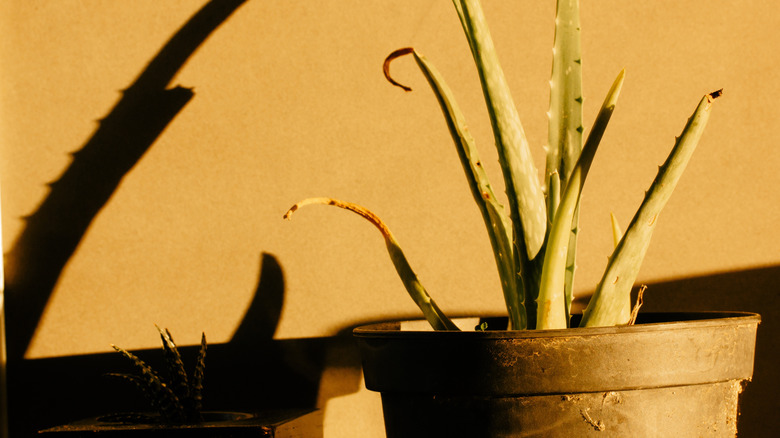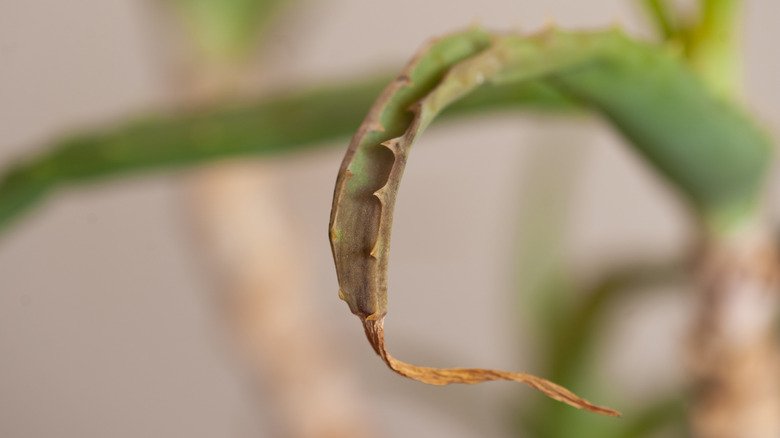The Real Cause Of Your Aloe Plant's Brown Leaves (& How To Prevent It In The Future)
Aloe vera is a hardy, low-maintenance plant that can typically survive without too much attention. Perfect for plant parents who sometimes forget to give their babies any TLC for weeks, this succulent can be grown outside throughout the year in USDA Hardiness Zones 8 through 11. But, like any living plant, aloe vera can suffer if it is not grown and taken care of correctly. There are a few reasons why the leaves of your aloe vera plant are turning brown from their usual rich green colors, including overwatering, underwatering, and sun stress. To determine the cause of the issue, it is time to become a plant detective and look for clues.
Overwatering can cause the leaves of your aloe vera to turn brown, so examine the plant for other signs that this may be the problem. Put your finger in the soil to see if it is damp, and look for any blisters on the plant's leaves. If the soil is extremely dry, consider whether you are underwatering the plant. As aloe vera stores its water in its leaves, they may start to look brown and shriveled if they are not receiving enough moisture.
If you don't think watering is the issue, it is time to consider sun stress as the reason your aloe vera leaves are turning brown. Although hardy, these plants can sunburn if they have been moved from the shade into the bright light quickly. Have you changed the location of your aloe recently? Lastly, it is helpful to look out for any signs of pests on your aloe. Aloe vera plants are known to get infestations of mealybugs and scale insects, which can create discoloration on their leaves. To find evidence of pests, look under the leaves and stems of your plant.
How to prevent your aloe vera leaves turning brown
Hopefully, you have figured out why your aloe vera plant is turning brown and now want to prevent it from happening again. In order to do so, it is essential to consider the cause of the browning. If overwatering caused it, preventing it from recurring is pretty straightforward. Only water your aloe if the top inch of the soil is bone dry (put your finger in to check it out), and ensure that the container it is in has several drainage holes. If you think that underwatering is the cause of the issue, you can prevent this from happening again by checking the soil regularly and watering as soon as it is dry. You may need to repot a dried-out aloe vera plant if underwatering is a regular problem it faces.
When moving your aloe vera, it is helpful to do so gradually to prevent any sunburn or stress to the plant. Go from shade, to partial shade, and then to full sun. Keeping an eye out for insects can also help you avoid the brown leaves coming back. Check your plant a few times a week for mealybugs and scale insects, and work to treat your aloe vera plant when it's infected with pests as soon as you spot any by cleaning the leaves and soil.

